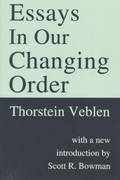Answer the followings questions showing step-by-step procedure.
\fmarginal cost coincides across plants. Intuitively, this indicates that the monopolist does not have further incentives to move production from one plant to another. Exercise #7 - Price discrimination with linear costs Consider a monopoly facing inverse demand function p(q) = 100 - q, and total cost TC(q) = 4q. a) No price discrimination. Assume that price discrimination is illegal. What are the monopolist's optimal output, price and profits? b) First-degree price discrimination. For the remainder of the exercise, consider now that the monopolist can practice price discrimination. In addition, assume that this firm has enough information to practice first-degree (perfect) price discrimination. What are the monopolist's optimal output, price and profits? c) Two block pricing. Assume that the monopolist offers price discounts (i.e., two blocks of units, each sold at a different price per unit). What are the monopolist's optimal output, price and profits? d) Comparison. Compare the monopolist's profit under each of the above pricing strategies, and show that the profits in part (b) are the highest, followed by those in (c), followed by those in part (c), and by those in part (a). Exercise #8 - Third-degree price discrimination with convex costs Consider a monopolist facing two groups of costumers, 1 and 2, with inverse demand functions P1 (q) = a1 - bq and P2(q) = a2 - bq, respectively, where a, > a2 > 0 and b > 0. The monopolist has convex cost function TC(q) = c(q)? where c > 0. a) Set up the monopolist's profit-maximization problem for each group of customers. b) Find its profit-maximizing output and price for each group of customers. ) Assume that a, = taz, where t > 1. Evaluate your above results using a, = taz, and determine how the output difference across groups of customers, and the price difference, are affected by a larger value of t. d) What would happen if t = 1, so the inverse demand functions coincide for both groups of customers?Suppose that a fishery is characterized by the following relationship between total fish stock and annual growth (note STOCK is in thousand tons, GROWTH is tons) STOCK 10 20 30 40 50 60 70 80 90 100 120 (thousand tons biomass) GROWTH 0 800 1600 2400 2800 3000 2800 2200 1200 0 -1200 (tons) Construct a graph showing the relationship between stock and growth. Construct a second graph showing the growth rate at each stock level (for example, at stock = 60,000 tons, yield = 3,000 tons, growth = 5%). Answer the following questions: a.)What stock level corresponds to the maximum growth rate? b.) What stock levels gives the maximum sustainable yield? c.) What will be the stable and unstable equilibrium stock levels for this fish population in a natural state?12. A monopolist has a single production plant in California with a total cost function of c(Q) = =Q2, where Q is total output. The good can be sold to two separate markets, those on the west coast and those on the east coast. There is no resale between coasts. The inverse demand function for the east coast is given by p = 100 - qe and the inverse demand function for the west coast is given by p = 80 -=qw a) Calculate the monopolist's profits if he uses standard uniform pricing. b) The monopolist can build a second plant in Massachusetts (i.e. an east coast plant) that is identical to the California plant (i.e. west coast plant), and plans on producing output for each region at their respective plant. He will then treat these markets as separate, charging different prices to each market. If the cost of constructing the plant is $1200 should the monopolist build the second plant? How much should the monopolist be willing to pay for the plant? Explain










